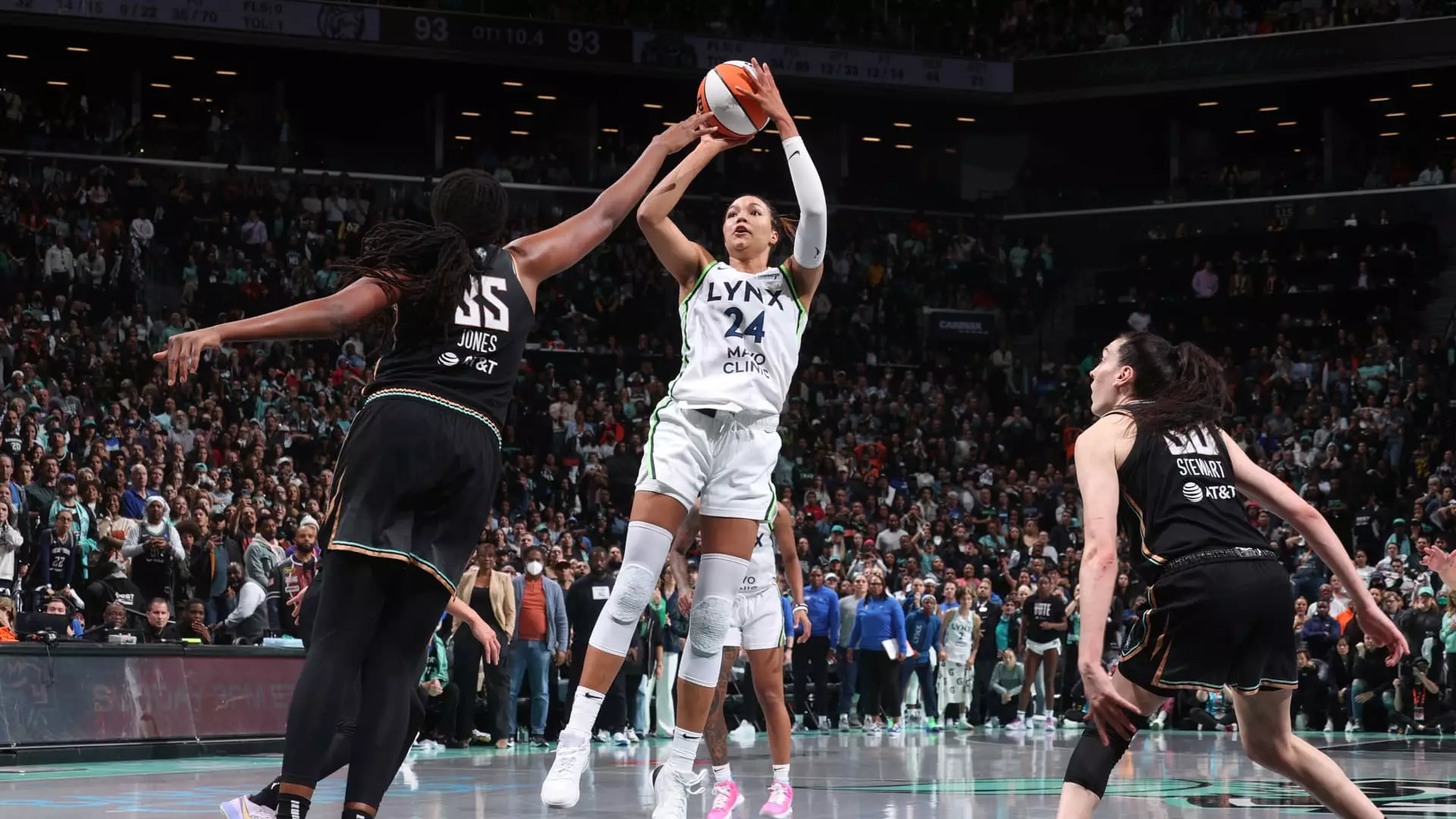The WNBA’s recent announcement to add three expansion teams in Cleveland, Detroit, and Philadelphia marks an ambitious stride in women’s professional basketball. From 13 teams to 18 within five years, this decision undeniably reflects the league’s growing confidence and its desire to broaden its reach. Yet, while Commissioner Cathy Engelbert praises this as a “monumental day” and a “bold step forward,” a critical eye recognizes the precarious balance between optimism and overextension.
The league’s strategic selection of cities steeped in basketball legacy cannot be dismissed lightly. Cleveland, Detroit, and Philadelphia each carry rich sports cultures, and their selection signals a commitment to markets with existing fan bases and infrastructures. However, the historical context is less encouraging. Cleveland, for example, previously hosted the Rockers from 1997 to 2003, a team that folded primarily due to poor attendance and financial struggles. Detroit’s Shock team, though more successful on the court with three championships, eventually left the city after 2009. Philadelphia, despite being a major sports hub, has lacked a WNBA presence until now. This mixed legacy raises the question: has the WNBA sufficiently addressed the fundamental issues that caused previous franchises to falter?
Chasing Growth at a High Price
The financial stakes of this expansion are unprecedented. Each new franchise is expected to shell out $250 million—a franchise fee that significantly exceeds previous marks in the league’s history. On the surface, this sounds like a vote of confidence, but it also raises concerns about potential barriers to truly grassroots ownership and the risk of commodifying women’s sports into another arena dominated by wealthy conglomerates.
Ownership in Cleveland and Detroit ties back to NBA affiliates and wealthy groups—such as the Rock Entertainment Group in Cleveland and the Gores family in Detroit—while Philadelphia’s will be under Harris Blitzer Sports Entertainment, with Comcast holding a minority stake. The involvement of high-profile corporate entities may amplify visibility and resources, but it could also prompt skepticism about genuine community engagement versus corporate branding efforts. Is the WNBA expanding to serve passionate local fanbases or merely capitalizing on the clout of established sports conglomerates?
Expansion Hype vs. Real Fan Engagement
A critical missing piece in the expansion discussion is sustainable fan engagement. Past franchises faltered because they couldn’t turn curiosity into enduring support. Even the Detroit Shock, despite their records and championships, eventually departed due to uninspired attendance. Therefore, the true challenge for these new teams is not merely setting up shop but cultivating a fan culture that sustains long-term viability.
Given the WNBA’s current status and relative lack of mainstream media coverage compared to men’s leagues, this expansion leans heavily on the hope that the burgeoning enthusiasm for women’s sports across the U.S. can be harnessed effectively. Yet, history teaches us that enthusiasm alone won’t pay the bills or fill the stands. The team owners and the league must develop far more comprehensive fan engagement strategies—community outreach, youth programs, marketing campaigns driven by authentic storytelling, and greater visibility on mainstream platforms—to turn raw potential into consistent success.
Missing the Socioeconomic Nuances
While the expansion highlights progress in women’s sports, it glosses over socioeconomic challenges that many American cities face. Detroit and Cleveland, in particular, wrestle with economic disparities, which affect discretionary spending on sports entertainment. By introducing franchises with hefty franchise fees and affiliations with wealthy owners, the league risks alienating core local demographics who could be the most passionate fans but the least financially empowered.
The WNBA’s mission to democratize and elevate women’s basketball must go beyond gimmicks like rapid expansion and high-profile ownership. Real growth demands investment in accessibility and affordability, so these teams are experienced not just as spectacles but as integral parts of community identity.
Why Houston’s Exclusion Is More Than a Missed Opportunity
Notably, Houston—a major market with a rich basketball history and a population that fervently supports women’s sports—was not selected for immediate expansion, though the league says it remains interested. This decision illustrates a missed moment to tap into dynamic markets that could fuel the league’s growth more sustainably. Houston represents a more diverse and economically vibrant city, where a WNBA team might thrive amid a large, youthful population excited for women’s sports.
By postponing such markets, the league seems to prioritize traditional basketball cities linked to NBA franchises, possibly sidelining newer, booming urban centers that embody the future of basketball fandom. This conservative approach could undermine the WNBA’s potential to truly revolutionize the sports landscape.
Final Thoughts: Expansion Is a Bet, Not a Guarantee
The WNBA’s upcoming expansion is a daring and hopeful move, but it’s far from a guaranteed triumph. The league must face its history and learn from past failures, or risk repeating them on a grander scale. Wealthy ownership and $250 million fees are impressive milestones but don’t inherently translate to fan devotion or long-term success. The league needs more than bold announcements; it needs a commitment to inclusivity, genuine community involvement, and sustainable growth strategies that respect the socioeconomic realities of its chosen cities. Without these elements, the expansion may be less a celebration and more a speculative gamble that could dilute the league’s hard-won progress.

